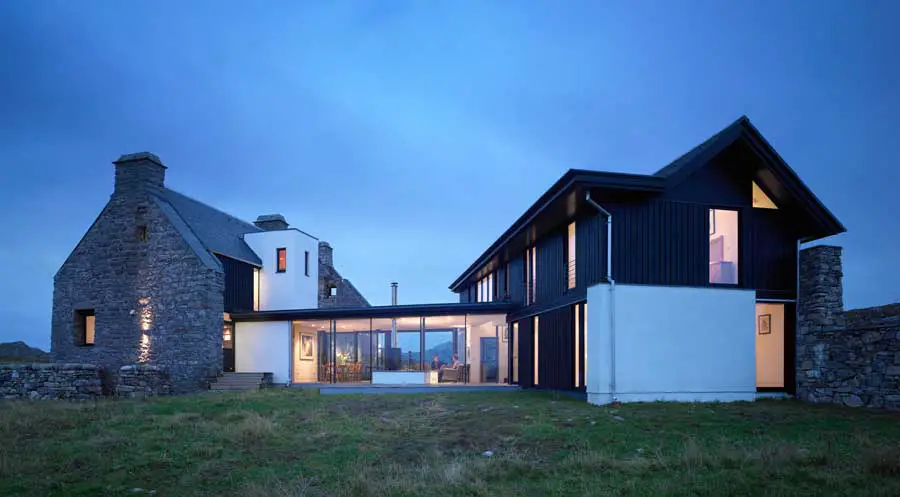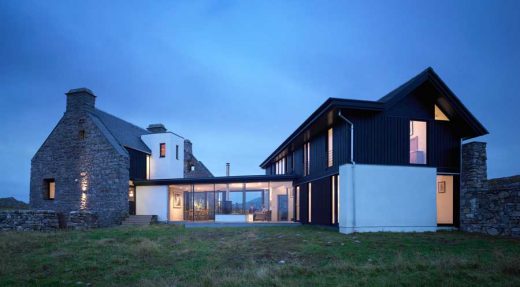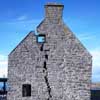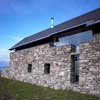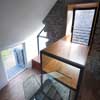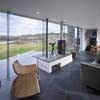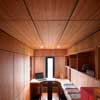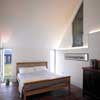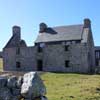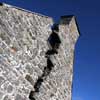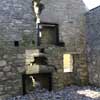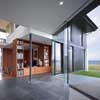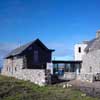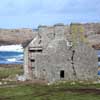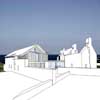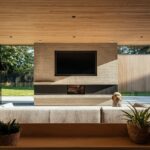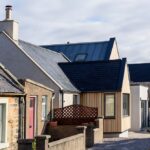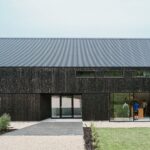Coll house, Wext Scotland Building Project, Photo, News, Design, Hebrides Property Image
Coll house Scotland : Hebrides Architecture
Grishipol Residence, Western Isles Residential design by wt architecture, Scotland
13 Jun 2011
White House Coll – Awards
We are delighted to announce that the White House has won the Architectural Excellence Award at the 2011 Scottish Home Awards. This is the second year running that WTA has secured this award, following 2010’s win for our Circus Lane conversion!
This follows hot on the heels of the fantastic news that the house was awarded an RIBA Award; one of ten projects in Scotland this year. As a result the White House is included on the longlist for the coveted Manser Medal awarded to the best new house or significant extension in the UK. The shortlist will be announced in September.
The project was also the winner of the inaugural Ambassador Award given by the Edinburgh Architecture Association and has recently been featured in articles for the New York Times and Sunday Times (see links below). Our thanks to our wonderful clients Alex and Seonaid Maclean Bristol and all involved in the White House project team, including Spey Building & Joinery, Tom Davies, David Narro Associates & Morham & Brotchie Oban.
‘Warm Respect for a Ruin’ – New York Times, 5th May 2011
‘New Horizons – The most inspiring homes in Britain’ – Sunday Times, 22nd May 2011
Coll home
House at Grishipol, Isle of Coll
Date built: 2009-11
Design: wt architecture – William Tunnell
The brief was to create a comfortable modern family home that optimised the experience of living in this intensely dramatic location, and re-appropriated the fragile eighteenth century ruined house on the site. The dramatically cleft state of the ruin presented both challenges and opportunities with the ruined nature of the structure contributing to an essential gutsy quality of the site, but also rendering economical restoration impossible.
It was concluded with the clients that some sort of physical engagement with the ruin was essential to successful occupation of the site, as well as protecting the important structure from further irreparable deterioration. The new house was to have five bedrooms, a study, open plan kitchen/living/dining, utility room and wet entrance space. It was to be durable and practical for vigorous family occupation and was to allow for the evolving needs of the family throughout their lifetimes.
The original ruin is a listed building and the site sits within an area of outstanding natural beauty. Early discussions with the planners indicated that they were willing to support occupation of the ruin especially because the house was to be for a family who were working the surrounding farmland.
A network of historic enclosures around the site acted as a generator for new more substantial structures to create shelter and garden space, and against which new accommodation could gather. The original eighteenth century entrance was restored and now leads to a three storey high entrance hall within the more stable section of the ruin.
A steel and glass stair in this space connects a stack of rooms but the other end of the ruin remains a roofless courtyard. The hallway connects through the depth of the ruin to a new living-dining space at the heart of the new home, which is glazed on both sides, and has a simple flat sedum-covered roof.
The sedums echo the natural fauna on the site, and this space remains essentially part of the landscape, in contrast with the object nature of the original building. To the west the bulk of new accommodation shelters behind a big dry-stone flanking wall, drawn up from original enclosure lines on the site, which in themselves reflected the natural lie of the land.
A small snug is separated from the main living room by a wall of cherry wood shelves, allowing the children to have their own living space separate but within sight of the main living spaces. Remaining walls are in black-stained Scottish larch, with punctuation of white-washed masonry bookends and a whitewashed turret which contains a small study on top of stores, a WC and a shower room.
The desperate state of the original house was as a result of poor foundations on sand, as well as undermining by treasure seekers who were searching for legendary gold. Stabilisation of the ruin required stitching with stainless steel ties, some within the mortar beds and other steel frame braces within window and fireplace openings. This consolidation work was carried out by local tradesmen prior to the start of the main building contract.
The new buildings required raft foundations, with careful jointing to avoid cracking through differential settlement. Stone from down-takings in the ruin was reused in the new flanking and enclosure walls. Local aggregate was used where possible. Remaining materials were as light weight as possible to reduce transportation and environmental costs, with the primary new structure in timber, with isolated steels. Separate fit-out contracts were used for the specialised internal panelling and furniture in the study and snug.
Previously: Work has started on site for WT Architecture’s designs for the ruin of the White House on the Isle of Coll. This complex project involves the incorporation of a new house within the spectacularly cleft ruin, with new wings of accommodation pushing out into the landscape, sheltered behind large dry-stone walls.
The house was visited by Boswell and Johnston during their tour of the Hebrides in 1773 and overlooks a dramatic rocky bay on the Atlantic coast. The building has been un-occupied for 150 years during and its deterioration was accelerated by treasure seekers digging for legendary gold under its walls. Work to stabilise the ruin is complete and the house is due for completion in 2010.
The White House Isle of Coll – before + after:
The White House Coll image / information from wt architecture
Location: Coll, Hebrides, western Scotland
Architecture in Scotland
Contemporary Scottish Architecture
Scottish Architect – architecture firm contact details on e-architect
Scottish Houses
Another Coll house by wt architecture – William Tunnell:
Sorisdal House Coll
New Coll House
Coll house conversion by Dualchas Building Design
Comments / photos for the Coll house Scotland page welcome

